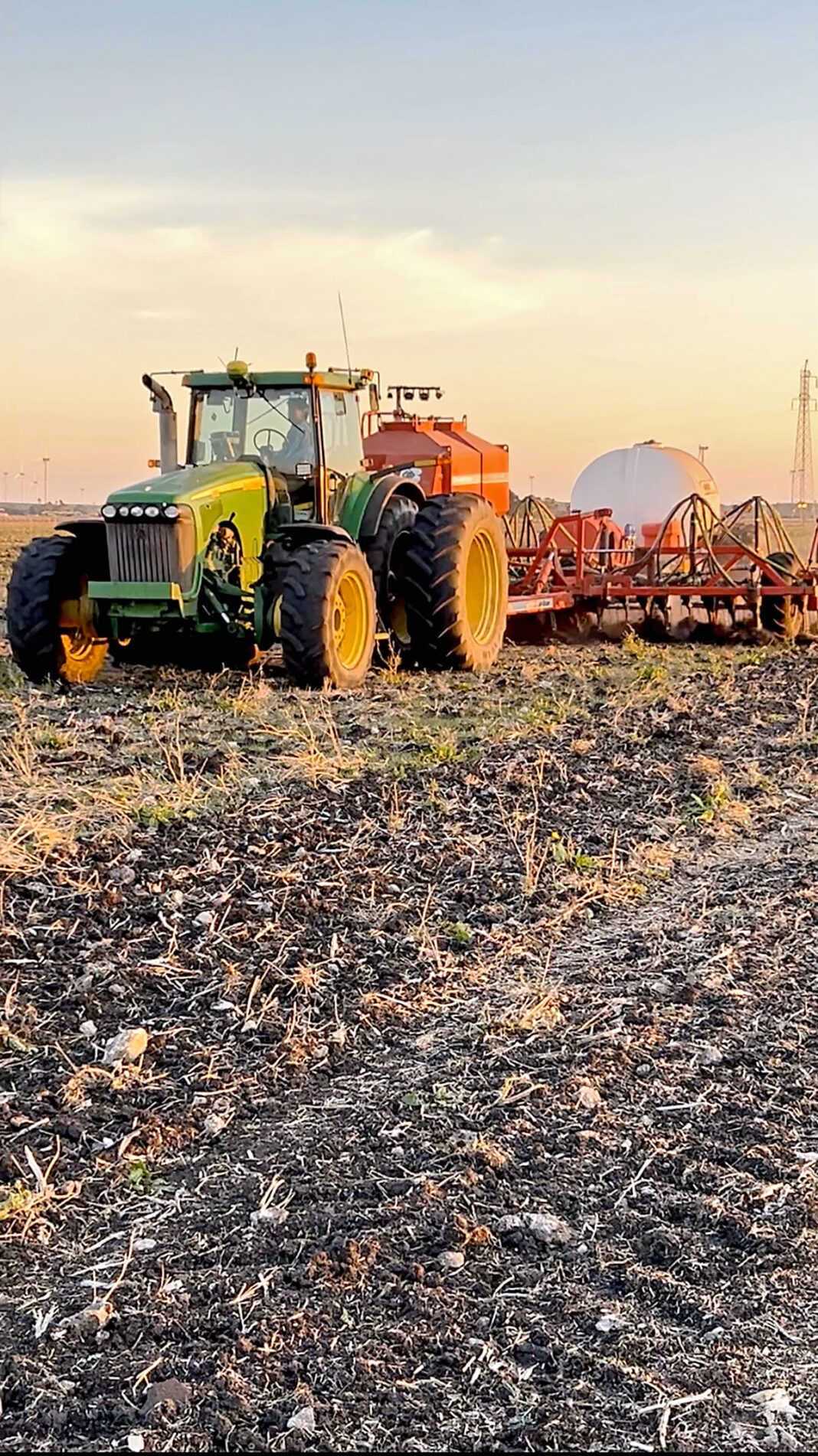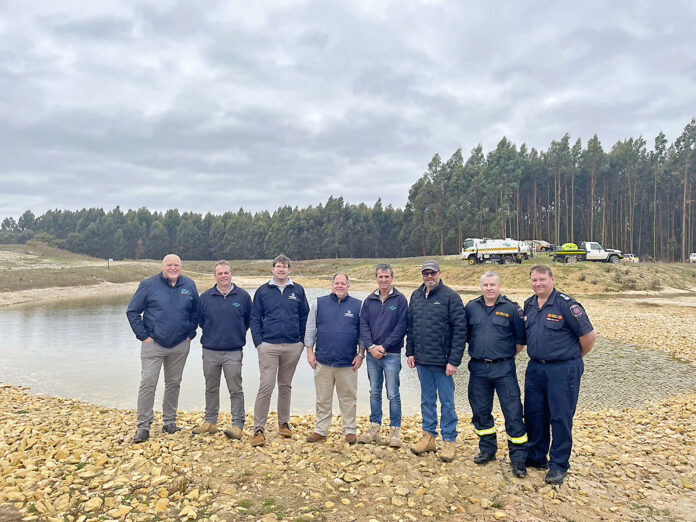Crop yield potential for this season will be highly dependent on spring rainfall with well-below average rainfall recorded across many parts of South Australia during early winter.
The Crop and Pasture Report – Crop Emergence, produced by the Department of Primary Industries and Regions (PIRSA), predicts the total grain production for the state to be about 12% down compared to the previous season.
Total grain production was previously predicted to be close to the 10-year average of 8.5 million tonnes, but unfortunately below average rainfall was received in most cropping areas during May and June, continuing the extended dry period since February.
The exceptions are currently the Lower and Eastern Eyre Peninsula, along with Central Hills and Fleurieu, which have been more fortunate with rainfall and are currently forecast to achieve near-average production.
The total estimated grain production for the 2024-25 season has been reduced to 7.7 million tonnes, which is slightly below the five-year average.
Seeding has been completed in all regions, but the absence of rain has resulted in the delayed – and in many paddocks, uneven emergence of crops – creating concern for producers.
Limits to yield potential for lentils has the estimated production value similar to last season, despite a 60% increase in area sown.
Wheat area has reduced by 6% from last season, driven by both cropped area reduction and adjustments to crop mix.
The area sown to hay is expected to remain relatively constant due to the high demand for supplementary feed.
The total cropped area has reduced slightly for the state, mainly due to decreases in sown areas in the Western Eyre Peninsula and Lower Murray regions because of the prolonged dry conditions into winter.
There is a relatively neutral forecast for August to October, which means there is equal probability of rainfall being above or below average.
With crops later than normal, the risk of heat shocks during flowering and grain fill is significantly higher this season which could further impact the state’s total production.
Pasture cover continues to be very poor, limited by the dry autumn and late start to the season.
Significant supplementary feeding continues to take place at a high cost for many producers.
Livestock condition remains below average, due to the limited availability of paddock feed.
Hay supplies are running low due to the prolonged period of supplementary feeding.
The PIRSA Family and Business (FaB) mentor service is available free of charge to help primary producers navigate challenging times.
FaB mentors are located across the state in regional areas to provide support and a listening ear when things get tough.
They are independent, confidential, and experienced in dealing with difficult situations.
FaB mentors work closely with other service providers such as Rural Financial Counsellors to connect primary producers with the most appropriate support for the situation.
Visit www.pir.sa.gov.au/cropreport to view the latest crop and pasture report.
Department of Primary Industries and Regions Industry Partnerships and Intelligence general manager Mattew Palmer said it had been a challenging start to the season with exceptionally dry conditions across most of the state from February to June, which has resulted in a smaller crop area being sown this year.
“Hopefully improved conditions throughout the rest of the season will see a close to average harvest,” he said.
Grains Producers SA chief executive Brad Perry said many areas across South Australia have faced their driest ever start to a season and yet there was crop emergence in most regions.
“Currently the season is about six weeks behind in most cropping regions and completely reliant on strong rainfall at the end of the year to get an average finish,” he said.
“At this stage confidence remains neutral for an average harvest but it all comes down to rainfall in the coming months.” Crop yield potential for this season will be highly dependent on spring rainfall with well-below average rainfall recorded across many parts of South Australia during early winter.
The Crop and Pasture Report – Crop Emergence, produced by the Department of Primary Industries and Regions (PIRSA), predicts the total grain production for the state to be about 12% down compared to the previous season.
Total grain production was previously predicted to be close to the 10-year average of 8.5 million tonnes, but unfortunately below average rainfall was received in most cropping areas during May and June, continuing the extended dry period since February.
The exceptions are currently the Lower and Eastern Eyre Peninsula, along with Central Hills and Fleurieu, which have been more fortunate with rainfall and are currently forecast to achieve near-average production.
The total estimated grain production for the 2024-25 season has been reduced to 7.7 million tonnes, which is slightly below the five-year average.
Seeding has been completed in all regions, but the absence of rain has resulted in the delayed – and in many paddocks, uneven emergence of crops – creating concern for producers.
Limits to yield potential for lentils has the estimated production value similar to last season, despite a 60% increase in area sown.
Wheat area has reduced by 6% from last season, driven by both cropped area reduction and adjustments to crop mix.
The area sown to hay is expected to remain relatively constant due to the high demand for supplementary feed.
The total cropped area has reduced slightly for the state, mainly due to decreases in sown areas in the Western Eyre Peninsula and Lower Murray regions because of the prolonged dry conditions into winter.
There is a relatively neutral forecast for August to October, which means there is equal probability of rainfall being above or below average.
With crops later than normal, the risk of heat shocks during flowering and grain fill is significantly higher this season which could further impact the state’s total production.
Pasture cover continues to be very poor, limited by the dry autumn and late start to the season.
Significant supplementary feeding continues to take place at a high cost for many producers.
Livestock condition remains below average, due to the limited availability of paddock feed.
Hay supplies are running low due to the prolonged period of supplementary feeding.
The PIRSA Family and Business (FaB) mentor service is available free of charge to help primary producers navigate challenging times.
FaB mentors are located across the state in regional areas to provide support and a listening ear when things get tough.
They are independent, confidential, and experienced in dealing with difficult situations.
FaB mentors work closely with other service providers such as Rural Financial Counsellors to connect primary producers with the most appropriate support for the situation.
Visit www.pir.sa.gov.au/cropreport to view the latest crop and pasture report.
Department of Primary Industries and Regions Industry Partnerships and Intelligence general manager Mattew Palmer said it had been a challenging start to the season with exceptionally dry conditions across most of the state from February to June, which has resulted in a smaller crop area being sown this year.
“Hopefully improved conditions throughout the rest of the season will see a close to average harvest,” he said.
Grains Producers SA chief executive Brad Perry said many areas across South Australia have faced their driest ever start to a season and yet there was crop emergence in most regions.
“Currently the season is about six weeks behind in most cropping regions and completely reliant on strong rainfall at the end of the year to get an average finish,” he said.
“At this stage confidence remains neutral for an average harvest but it all comes down to rainfall in the coming months.”




